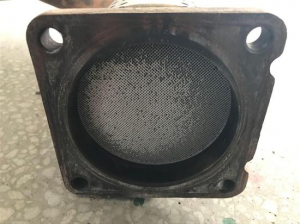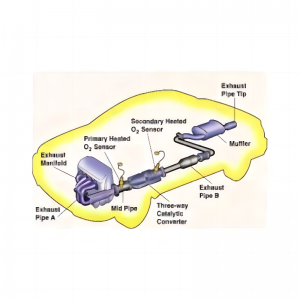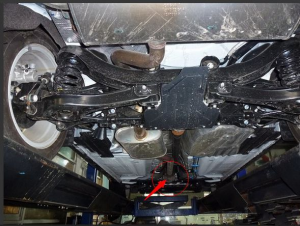The conditions of use of catalytic converters are quite strict. First of all, if gasoline or lubricating oil additives are improperly selected, lead-containing fuel additives or engine oil additives with excessive sulfur, phosphorus, and zinc content are used, phosphorus, lead, and other substances will be covered on the surface of the catalytic layer of the three-way catalytic converter. Prevent the harmful components in the exhaust gas from contacting it and lose its catalytic effect. This is what people often call the “poisoning” of the three-way catalytic converter.
Secondly, only when the temperature is between 400-800°C, the catalytic converter can catalyze the reaction. When the temperature is low, the conversion efficiency of the converter drops sharply. Driving for a long time at low temperature for a short distance will cause incomplete combustion of fuel, pollute and block the catalytic converter, cause exhaust obstruction, increase emission pollution, reduce engine power and increase fuel consumption. Therefore, catalytic converters are installed behind the hotter exhaust manifold.
Third, the conversion efficiency is the highest only when the air-fuel ratio is equal to 1. Therefore, the engine equipped with the three-way catalytic converter must be supplied with the mixture gas of the theoretical mixing ratio in order to ensure that the three-way catalytic converter has a better effect. If the mixture gas composition is not the theoretical mixing ratio, the oxidation reaction of CO and HC or the reduction reaction of NOx cannot be carried out completely. In addition, improper adjustment of the engine, such as too rich mixture or misfiring of the cylinder, will cause severe overheating of the converter.
And we can judge the degree of damage through visual inspection. After raising the vehicle, observe whether there is any depression on the surface of the three-way catalytic converter. If there are obvious dents and scratches, it means that the carrier of the catalytic converter may be damaged. Look for heavily discolored spots or slight bluish and purple marks on the catalytic converter housing, and a very noticeable dark gray spot in the center of the catalytic converter guard, which could indicate that the catalytic converter was overheated , further inspection is required.
Hit and shake the catalytic converter with your fist. If you hear the sound of moving objects, it means that the internal catalyst carrier is broken and the catalytic converter needs to be replaced. At the same time, check whether there are cracks in the catalytic converter, whether the connections are firm, and whether there are leaks in various conduits. If so, they should be dealt with in time. This method is simple and effective, and can quickly check the mechanical failure of the catalytic converter.
Due to the damage and peeling off of the catalyst carrier and the accumulation of oil, it is easy to block the channel of the carrier and increase the flow resistance. At this time, it can be checked by measuring its pressure loss.
Drill a hole in the proper position of the exhaust pipe at the front end of the catalytic converter, connect a pressure gauge, start the engine, and measure the exhaust back pressure at idle speed and 2500r/min respectively, if the exhaust back pressure does not exceed the specified value of the engine , it indicates that the catalyst support is not blocked.
If the exhaust back pressure exceeds the limit value specified by the engine, the exhaust system at the rear end of the catalytic converter needs to be removed, and the above test is repeated. If the catalytic converter is blocked, the exhaust back pressure will still exceed the limit value specified by the engine. value. If the exhaust back pressure drops, there is a problem with the exhaust system downstream of the muffler or catalytic converter, and the broken catalyst carrier is trapped in the downstream exhaust system, so it is very necessary to first perform a visual inspection to confirm that the catalyst carrier is intact. Problematic exhaust pipes, mufflers and catalytic converters can also be judged by measuring the pressure loss before and after them.
Post time: Feb-10-2023










